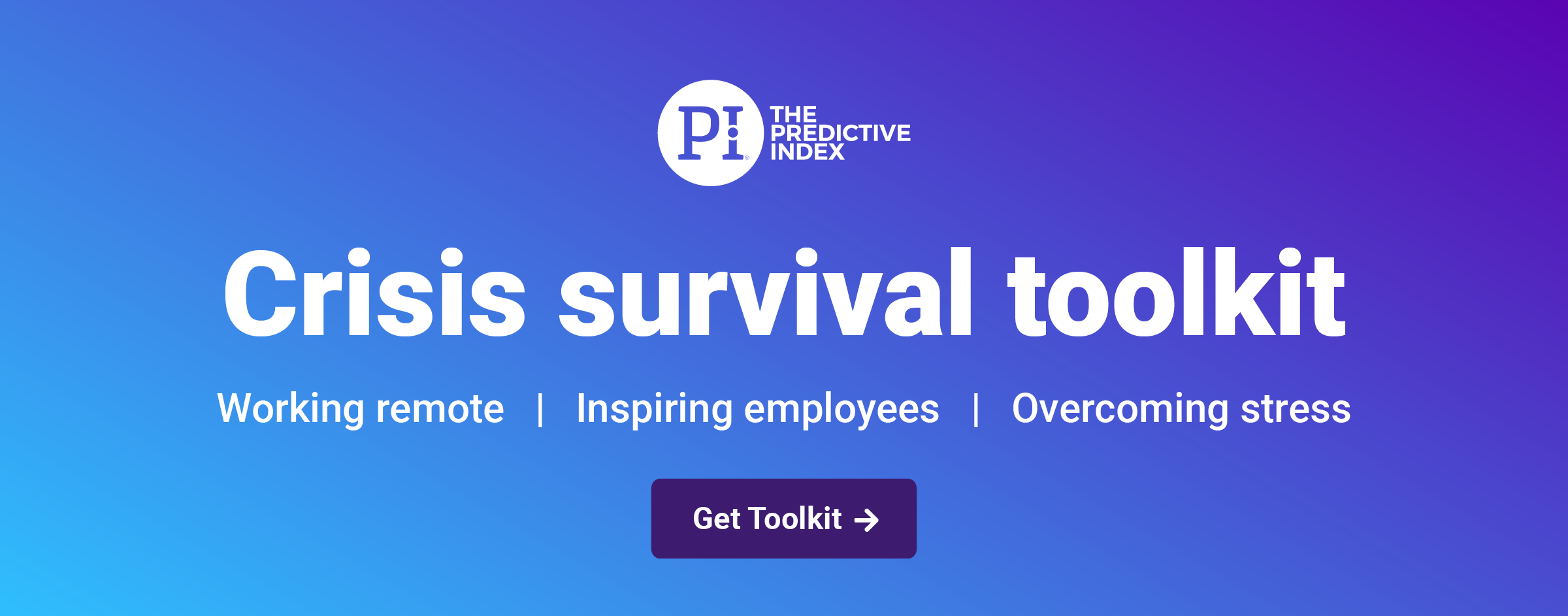When someone brings up “career pathing,” your brain is programmed to zoom out. Instinctively, you think about the big picture.
It can be tough to view things at that sort of scale when the next month, or even the next week, is indefinite. If there’s one certainty about the COVID-19 crisis, it’s that nothing is certain. Everything else seems to be on hold during The Great Pause, so you’d be forgiven for subconsciously putting career development on the back burner. But you’d also be mistaken.
Times of change and uncertainty shouldn’t be met with inaction. Career pathing should continue alongside your other goals for employee engagement and talent management. Ideally, they work in tandem.
You just might need to tweak the template a little bit by:
- Maintaining career development goals
- Emphasizing employee retention and internal hiring
- Highlighting the role of human resources
Let’s examine how each comes into focus even when everything else seems blurry.
Maintaining career development goals
Excellence should still be rewarded. That’s a good starting point from which to approach career development amid uncertainty. Even if your company has rightsized or reduced force, high performers need to be recognized and promoted for work well done. You could argue it’s even more important to do so in these times.
Look at it as a matter of doing right by your people. Even if the promotion or new title may not be accompanied by all the usual perks, there’s still tremendous value in the act of recognizing exceptional performance. It fulfills a commitment to the individual, while showing the rest of the organization there’s a career path for you here.
If yours is a growth-minded organization, then a continued commitment to career pathing is essential to protecting the culture you’ve worked so hard to build.
The message is: Our values haven’t changed. We may have hit a detour, but our engine is still running strong.
When continuing developmental conversations with your people, remember to balance that commitment with pragmatism and honesty. Be empathetic, yet transparent if they ask questions about things like compensation, team expansion, or budget (i.e., for certifications or continued education).
Other simple steps to implementation include:
- Holding personal development meetings in addition to regular 1 on 1s.
- Setting aside time to discuss career goals in both the near and long term.
- Talking about new company initiatives or other professional development opportunities.
- Encouraging people to remain aspirational, even if it feels like upward mobility isn’t possible.
People should continue to assess their own performance, even if it’s in a new light. What was a 3-star effort before could be a 5-star effort now, given the strained circumstances (remote work, home schooling, fractured teams). Career pathing software can help provide a consistent framework here, but it’s the act of evaluation that matters most.

Emphasizing employee retention and internal hiring
Employees don’t tend to leave a job purely because of a lack of growth opportunities in times of economic downturn. They do seek new jobs when the current one leaves them disengaged, regardless of the broader climate.
Misalignment—either with team, manager, culture, or role—drives disengagement. So it’s important in times of uncertainty to be purposeful with your career pathing. Stay true to your principles. In continuing to talk about career advancement, you’re building more equity with employees. That good will is essential to staving off attrition and still seeing the benefits of employee engagement.
It also makes it a little easier to have more difficult career pathing conversations. Maybe the opportunities for advancement a person expected are no longer feasible. Companies that practice talent optimization are at an advantage here. Just because you’ve implemented a hiring freeze or perhaps even had to reduce force, that doesn’t mean there aren’t opportunities for mobility. You just need to be creative and strategic in the deployment of your people.
For example, in the wake of a RIF, any of the following may be true:
- Some teams are smaller than before.
- Existing roles have become obsolete.
- Some roles have been merged.
- New roles need to be created to align with changes in strategy.
Each can serve as a chance to re-implement your career pathing program by optimizing your talent via internal promotions. Some employees may thrive in an adjusted role because their behavioral drives are now better suited for the work to be done. Perhaps you have an individual with lower patience but a higher extraversion drive. They jump at the chance for more variety and opportunities to influence different departments and initiatives—and now they can happily wear more hats in a newly consolidated position.
If you can inspire and empower that particular employee, leveraging their strongest behaviors, you also aid in long-term succession planning. By honing new skills and moving into a role better suited for them, you not only increase your chances of retention, but foster professional growth as well. That employee is now better equipped to lead your organization—in this role or another—down the road.

Highlighting the role of human resources
Human resources (or people ops) is pivotal in times of change and uncertainty. Ideally, HR leaders already have a seat at the decision-making table. They can be instrumental in identifying skill gaps and where current jobs might benefit from training and development. They serve an essential role in supporting the collective mental well being of your organization.
HR also sets the tone for how your organization views career pathing during uncertain times—after all, HR is all about influencing. If HR stresses that career mapping remains a priority and a value, managers and other leaders are likely to follow suit.
HR holds the keys. If the company freezes a career pathing program by, say, tabling performance reviews, it undercuts the long-term investment you’ve made in your people. Without the same incentive or opportunity for recognition, disengagement is likely to follow.
Maybe those reviews take on a different tone amid budget cuts or a spending freeze. They still need to happen. Remain committed to what you committed to, and be straight-up with your people. That effort will pay dividends when you emerge stronger on the other side.
One simple tool HR can use (and transfer throughout the organization) is a leadership rubric. This helps codify the qualities you’re looking for in leadership at every level while reinforcing some of the values that remain at your company’s core.
Your HR professionals should also embody those values. That makes them prime candidates for internal mobility opportunities as well. Maybe you no longer need three recruiters, but you do need a steady presence and someone whose values align with those of the organization—someone who will restore morale and buy-in. That former recruiter could provide a boost to another team suddenly in need.
Staying the career pathing course
Ultimately, career growth can’t be viewed through a static prism. Times of change and uncertainty call for different strategies and forms of implementation. They don’t call for wholesale changes to your identity as an organization. People will generally understand the former; they might chafe at the latter.
A resilient organization will keep the career path clear and well-worn—even if it makes different turns than it did before.









